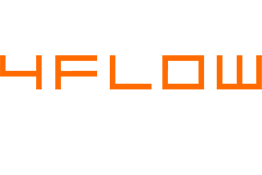SAP CoE Team Structure
Filter By
Browse By
- SAP Analytics and AI
- SAP Application Development and Integration
- All SAP Application Development and Integration
- SAP ABAP
- SAP ABAP Development Tools
- SAP ABAP Test Cockpit
- SAP API Management
- SAP BAPI
- SAP Basis
- SAP BRF
- SAP Business Application Studio
- SAP CMS
- SAP Design Studio
- SAP Development Tools
- SAP DevOps
- SAP EAI
- SAP EDI
- SAP Extension Suite
- SAP Fiori
- SAP Fiori Elements
- SAP Integration Suite
- SAP Low Code Application Development
- SAP Low Code Automation
- SAP Netweaver
- SAP Release Management
- SAP UI5
- SAP Web Application Server
- SAP Web IDE
- SAP Business Process Management
- SAP Center of Excellence
- SAP CIO
- SAP Customer Experience
- SAP Data and Data Management
- All SAP Data and Data Management
- SAP BW
- SAP BW/4HANA
- SAP Crystal Reports
- SAP Data Archiving
- SAP Data Center
- SAP Data Governance
- SAP Data Integration
- SAP Data Migration
- SAP Data Quality
- SAP Data Services
- SAP Data Strategy
- SAP Data Visualization
- SAP Data Warehouse Cloud
- SAP DMS
- SAP Document Control
- SAP EIM
- SAP ETL
- SAP ETL Tools
- SAP HANA
- SAP HANA Administration
- SAP HANA Deployment Infrastructure
- SAP HANA Studio
- SAP Master Data
- SAP Master Data Governance
- SAP MDM
- SAP Enterprise Architect
- SAP Enterprise Asset Management
- SAP ERP
- SAP Finance
- All SAP Finance
- SAP Accounting
- SAP AR AP
- SAP Asset Accounting
- SAP Billing Systems
- SAP BPC
- SAP BRIM
- SAP Cash Management
- SAP Central Finance
- SAP Controlling
- SAP COPA
- SAP Cost Center Accounting
- SAP Currency Risk
- SAP e-invoicing
- SAP FICO
- SAP Finance Automation
- SAP Advanced Financial Closing
- SAP Financial Consolidation
- SAP Financial Planning
- SAP FX Risk
- SAP General Ledger
- SAP Global Tax Management
- SAP Hyperion
- SAP Order to Cash
- SAP Payment Processing
- SAP Profitability Analysis
- SAP Rebate Management
- SAP S/4HANA Finance
- SAP SWIFT Compliance
- SAP Treasury Management
- SAP Universal Journal
- SAP Governance Risk and Compliance
- SAP Human Capital Management
- SAP Intelligent Technologies
- SAP Platform and Technology
- All SAP Platform and Technology
- SAP Business Technology Platform
- SAP Cloud
- SAP Cloud Connector
- SAP Cloud Integration Platform
- SAP Cloud Migration
- SAP Cloud Platform
- SAP Cloud Providers
- SAP Cloud Strategy
- SAP Digital Signature
- SAP Container Platform
- SAP HANA Enterprise Cloud
- SAP Digital Asset Management
- SAP Smart Forms
- SAP HEC
- SAP Digital Integration Hub
- SAP Hyperscalers
- SAP Infrastructure
- SAP Messaging
- SAP Quality and Testing
- SAP Security
- SAP Spend Management
- SAP Supply Chain Management
- All SAP Supply Chain Management
- SAP APO
- SAP Asset Management
- SAP Business Network
- SAP Digital Manufacturing Cloud
- SAP Digital Twin
- SAP EWM
- SAP IBP
- SAP Inventory Management
- SAP Label Printing
- SAP Logistics
- SAP Manufacturing
- SAP Manufacturing Automation
- SAP MES
- SAP MII
- SAP MM
- SAP MRO
- SAP MRP
- SAP Order Management
- SAP Plant Maintenance
- SAP PLM
- SAP Production Planning
- SAP S&OP
- SAP SD
- SAP SPM
- SAP Supply Chain Planning
- SAP Track and Trace
- SAP Transportation Management
- SAP System Administration
SAP CoE Team Structure
Funding a large center of excellence may not be feasible due to budget, typically a small team is formed to start. This team builds a strong relationship with the business to collaborate and reach out when more information is needed.
SAP CoE Team Structure
Funding a large center of excellence may not be feasible due to budget, typically a small team is formed to start. This team builds a strong relationship with the business to collaborate and reach out when more information is needed.
Generally, there are four categories of a CoE team:
- This is the figurehead of the team that takes control of the lifecycle of the SAP system. One important aspect of this role is demand management.
- Core team. This team manages the day-to-day operations and small-scale enhancements. They contribute to the definition of the center of excellence methodology.
- Extended team. This group works alongside the core team within their subject matter expertise. When this team does not exist in an organization the roles work as part of the core team.
- Project team(s). This is a temporary team to deliver SAP projects to the organization. It includes a project manager, SAP architect(s), SAP analyst(s) and business process experts.
CoE Simply Defined
The CoE (Center of Excellence) is a centralized team of skilled knowledge workers whose mission is to provide the organization with best practices around a certain area of interest. Regardless of the organizational structure or budget, it is important to have the right people with defined roles and responsibilities for the team. The goal is to sustain world-class performance and value.
Seven Steps for to Success for SAPinsiders are:
- Realign the business and IT after an SAP implementation
- Set up a governance
- Define functions and organize the CoE
- Implement post go live processes for continuous improvement
- Mobilize for post go live organizational change
- Marketing the CoE
- Set up your CoE
968 results
-

- SAP EAI
 Premium
Premium
Use a Custom Adapter Module to Integrate SAP PI with the JSON Format
Reading time: 19 mins
At the moment, SAP Process Integration (SAP PI) does not support direct integration with the JavaScript Object Notation (JSON) format. Aaron Long shows how to develop a custom adapter module processor in Java to convert data between JSON and the XML format. Key Concept JavaScript Object Notation (JSON) is a lightweight data-interchange format. It is...…
-

 Premium
Premium
Automate Your Business Blueprint Using RBPD and the Solution Documentation Assistant in SAP Solution Manager 7.1
Reading time: 17 mins
ManagerThe 7.1 release of SAP Solution Manager introduces a strategic cooperation between SAP and IBIS to deliver an automated approach to reverse business process documentation (RBPD). With this new release, IBIS provides business content for the Solution Documentation Assistant (SDA). It supports a comprehensive analysis of the functional use of SAP ERP systems based on...…
-

- SAP Process Analysis
 Premium
Premium
Gauge a Company’s Risk Exposure Using Market Risk Analyzer
Reading time: 31 mins
Learn how to implement SAP’s Market Risk Analyzer. The analysis reports in Market Risk Analyzer help an organization or, more specifically, a treasury department, to assess and quantify the risks of its financial positions. Once the risks of an organization are analyzed and quantified, they can be more easily controlled. The inputs to Market Risk...…
-
-

- SAP Finance
 Premium
Premium
Leverage SAP Product Costing for Joint Production
Reading time: 25 mins
Joint production is a production process of two or more finished products. In this example, the production cost is shared between the finished manufactured products. Learn the basics of apportionment of the standard cost between the primary finished product and other co-products. Discover the significance of a preliminary settlement transaction for the variance calculation of...…
-

- SAP ABAP Development Tools
 Premium
Premium
Introduction to the ABAP Data Dictionary and Managing Data Dictionary Objects (Chapter 5)
Reading time: 94 mins
This sample chapter (chapter 5) from Faisal Altaf’s book, “Introduction to ABAP: A Project-Driven Guide,” is an overview of the ABAP Data Dictionary. The book uses the example of a point of sale project to introduce ABAP. As a current SAP Experts member you can read the eBook (online or download) with no extra charge...…
-

 Premium
Premium
SAP ERP HCM Performance Management: New Features in Enhancement Pack 4 (Part 2)
Reading time: 21 mins
Learn how to create team goals and cascade them to your team. Also, see how you can perform team calibration and have the new calibrated final rating updated automatically in the appraisal documents. Key Concept SAP ERP HCM Performance Management enhancement package 4 became available for ramp-up customers in October 2008 and widely available in...…
-

 Premium
Premium
Use LSMW to Load Files with Multiple Source Structures
Reading time: 7 mins
Learn how to load sequential files with multiple source structures using the Legacy System Migration Workbench by following an example of uploading journal entries. Key Concept When using Legacy System Migration Workbench, you may need to load data with multiple source and target structures. Your source structures may be a set of journal entries in...…
-
-

 Premium
Premium
Follow a Reliable Project Management Framework for Your SAP Archiving Process
Reading time: 14 mins
/Project ManagementLearn a project management methodology that is imperative for a successful SAP archiving project. Key Concept SAP data archiving project management entails the process of planning, organizing, and managing resources to ensure the successful implementation of a data volume management strategy called SAP data archiving. Data archiving as a data management concept helps reduce...…
-

- SAP Process Design
 Premium
Premium
Configure and Implement the Proper Internal Controls Up Front for an Easier Audit
Reading time: 30 mins
Having to go back and change your SAP system or your related business processes to deal with audit concerns takes time away from your daily operations and results in unnecessary distractions. By configuring your SAP system appropriately and designing your related business processes to effectively address your business risks, you can save significant effort. This...…
-

 Premium
Premium
The SAP Solution Manager Role Matrix Made Easy
Reading time: 17 mins
ManagerLearn how clearly identifying SAP Solution Manager roles that address your organization’s requirements and support the future use of SAP Solution Manager functionalities can allow you to build a robust position-mapping role matrix. Key Concept After a successful implementation, SAP Solution Manager should run smoothly and provide transaction access to user groups with the proper...…
Become a Member
Unlimited access to thousands of resources for SAP-specific expertise that can only be found here.
Become a Partner
Access exclusive SAP insights, expert marketing strategies, and high-value services including research reports, webinars, and buyers' guides, all designed to boost your campaign ROI by up to 50% within the SAP ecosystem.
Upcoming Events
Related Vendors
Your request has been successfully sent


